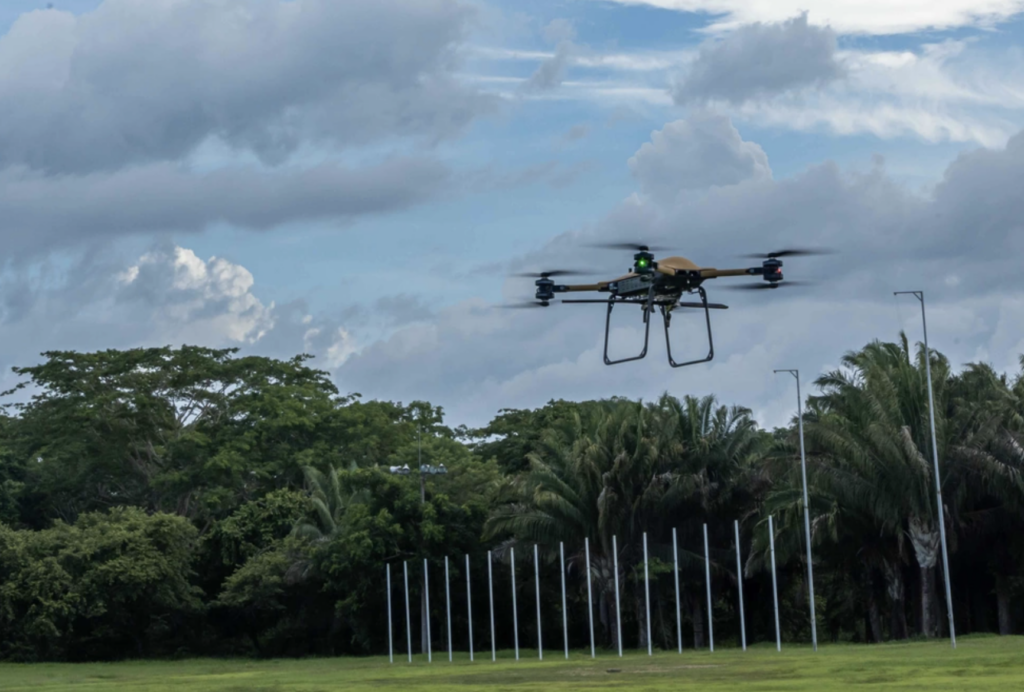U.S. Fourth Fleet Seeks Future Watchstander AI Tool


U.S. Marine Corps Tactical Resupply Vehicle 150 (TRV) unmanned aircraft system on return from resupply mission during UNITAS LXIV Exercise in Covenas, Colombia, July 15, 2023. (Photo: U.S. Marine Corps by Lance Cpl. Christian Salazar)
As the U.S. Fourth Fleet starts practicing operationalizing unmanned systems, it is interested in ultimately getting watchstander data artificial intelligence (AI) tools to help sift through the added data coming in, an innovation officials hope will help spur more investment in the field.
Cmdr. David Edwards, Fourth Fleet Director of Technology and Innovation, told reporters during a media call on July 20 that several systems being used in the Fourth Fleet’s uncrewed system testing already have AI stems “baked in the ability to analyze imagery onboard the vehicles themselves.”
However, he said the fleet is thinking about pursuing a future AI tool as “something that we need in order to monitor all these data flows going in.”
In April, Secretary Carlos Del Toro and Adm. Mike Gilday, Chief of Naval Operations, revealed the Navy will build off Task Force 59’s successful testing of unmanned systems and AI by expanding similar work to the Fourth Fleet in Central and South America (Defense Daily, April 4).
Fourth Fleet began the work to operationalize unmanned and AI systems this month during the annual international UNITAS exercise.
Edwards noted they are currently using the Minotaur system to display this unmanned data.
He noted Minotaur is a “government-owned software device that provides a current operational picture. And that software is designed specifically to integrate data feeds from many different sources.”
Minotaur is also being used by Fifth Fleet with its Task Force 59 experimenting with unmanned systems and AI.
Edwards said while Minotaur is useful, “the watchstander needs an assist, in order to process and understand exactly what that data means and which data is important in which data is routine.”
Such a watchstander data tool “is something that we look to the future to build to help us understand all the data flowing in. So that the watchstander knows when it’s just a regular day in the Caribbean and when actions needs to be taken.”
Rear Adm. Jim Aiken, commander of Fourth Fleet, told reporters that on any given day his area of operations can have 700 fishing vessels operating, divided into those performing normal work, some turning their Automatic Identification System (AIS) on and off, providing fuel to drug runners, and participating in human trafficking.
“There’s some ways with AI tools, and we started doing some evaluation with this where we can identify those, and then instead of overwhelming our resources, we can use our limited resources in this area,” Aiken said.
He added that, given the risks in his AOR, AI can help them best use their limited resources to get after the challenges and actors not acting in accordance with international law.
DIU Director Doug Beck recently underscored how the Fourth Fleet effort here will help scale up the unmanned and AI development for the military overall.
“I’ll say this as a Navy guy, this is an area where the Navy is going from not always being the fastest to being one of the fastest and thinking about ways to do this,” he said.
Beck highlighted that Fourth Fleet is being leveraged “to do this at scale for maritime domain awareness, leveraging AI and sensors in order to make that happen. That’s a great example of beginning to scale these things, and we’ve got to go a lot faster and a lot bigger in terms of what that scale really means.”
He argued these kinds of larger-scale demonstrations will help spin the wheel to make it easier to spur more investment in AI and unmanned systems “in order to make that happen in a way that scales.”
Previously, Fifth Fleet and Task Force 59 leaders have said using unmanned and AI systems can help them develop a picture of what a relatively normal activity at sea in their AOR looks like, then when there are deviations, they can task different types of unmanned systems to investigate them.
Last month, Northrop Grumman unveiled the design of the new autonomous uncrewed VTOL aircraft capable of operating from Navy ships at sea. It will build the vehicle under a new contract from the Defense Advanced Research Project Agency’s (DARPA) Tactical Technology Office.
—————
Boost Internet Speed–
Free Business Hosting–
Free Email Account–
Dropcatch–
Free Secure Email–
Secure Email–
Cheap VOIP Calls–
Free Hosting–
Boost Inflight Wifi–
Premium Domains–
Free Domains





